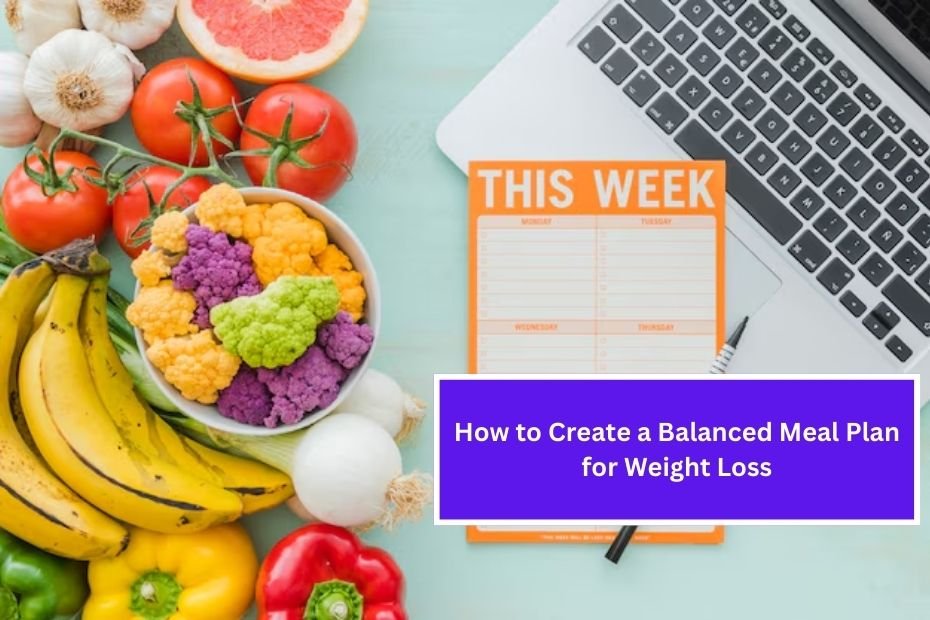Creating a balanced meal plan for weight loss is essential for achieving and maintaining a healthy weight. It involves understanding your nutritional needs, incorporating a variety of foods, and developing strategies that work for your lifestyle. In this article, we will explore the fundamentals of balanced meal planning, offer practical tips for creating your own plan, and discuss the importance of mindfulness and flexibility in your approach.
Understanding Balanced Meals
What Constitutes a Balanced Meal?
A balanced meal typically includes:
- Protein: Essential for building and repairing tissues, protein helps maintain muscle mass during weight loss. Good sources include lean meats, poultry, fish, eggs, beans, lentils, and tofu.
- Healthy Fats: Fats are crucial for nutrient absorption and hormone regulation. Opt for sources like avocados, nuts, seeds, and olive oil.
- Complex Carbohydrates: These provide energy and are rich in fiber, which aids digestion and promotes satiety. Choose whole grains, fruits, and vegetables over refined grains.
- Fiber: High-fiber foods keep you full longer and support digestive health. Aim to include a variety of fruits, vegetables, legumes, and whole grains in your meals.
- Hydration: While not a food group, staying hydrated is crucial for overall health. Water is the best choice, but herbal teas and other low-calorie beverages can contribute as well.
The Importance of Portion Control
Portion control is a vital aspect of weight loss. Even healthy foods can contribute to weight gain if consumed in excessive amounts. Learning to recognize appropriate portion sizes can help you manage your calorie intake while still enjoying your meals.
Creating Your Meal Plan
Step 1: Assess Your Nutritional Needs
Before diving into meal planning, it’s essential to understand your individual nutritional needs based on factors such as age, gender, weight, activity level, and health conditions. Consider consulting a registered dietitian or using reputable online calculators to determine your daily caloric needs and macronutrient distribution.
Step 2: Set Realistic Goals
Establish specific, achievable goals for your weight loss journey. Aim for a realistic weight loss rate of 1 to 2 pounds per week, which is considered safe and sustainable. Setting realistic goals will help you stay motivated and focused.
Step 3: Plan Your Meals
Breakfast Ideas
- Oatmeal with Berries and Nuts: A bowl of oatmeal topped with fresh berries and a sprinkle of nuts provides fiber, healthy fats, and protein.
- Greek Yogurt Parfait: Layer Greek yogurt with sliced fruits and a handful of granola for a balanced breakfast rich in protein and healthy carbohydrates.
- Smoothie: Blend spinach, banana, protein powder, and almond milk for a quick, nutrient-dense breakfast.
Lunch Ideas
- Quinoa Salad: Combine cooked quinoa with cherry tomatoes, cucumbers, bell peppers, and a drizzle of olive oil and lemon juice for a refreshing, protein-rich meal.
- Grilled Chicken Wrap: Use a whole grain wrap to encase grilled chicken, leafy greens, and hummus for a satisfying lunch.
- Vegetable Stir-Fry: Sauté a mix of colorful vegetables with tofu or shrimp and serve over brown rice or quinoa.
Dinner Ideas
- Baked Salmon with Asparagus: Salmon is rich in omega-3 fatty acids. Pair it with steamed asparagus and quinoa for a balanced dinner.
- Vegetable and Bean Chili: A hearty chili made with various beans and vegetables provides fiber and protein, perfect for a filling meal.
- Zucchini Noodles with Turkey Meatballs: Swap traditional pasta for zucchini noodles and serve with homemade turkey meatballs and marinara sauce for a low-carb dinner.
Snack Ideas
- Carrot Sticks and Hummus: A simple and nutritious snack that combines fiber and protein.
- Apple Slices with Nut Butter: This snack provides healthy fats and a satisfying crunch.
- Cottage Cheese with Pineapple: A protein-rich snack that’s sweet and satisfying.
Step 4: Make a Shopping List
Once you have your meal plan, create a shopping list based on the ingredients you’ll need. Focus on whole, unprocessed foods and try to shop the perimeter of the grocery store, where fresh produce, proteins, and dairy products are typically found.
Step 5: Meal Prep and Cooking
Preparing meals in advance can save time and ensure that you have healthy options readily available. Consider dedicating a few hours each week to meal prep. Here are some tips:
- Batch Cooking: Prepare large portions of staples like grains, proteins, and roasted vegetables that can be used in multiple meals.
- Portion Control: Use containers to portion out individual meals and snacks for easy grab-and-go options.
- Experiment with Flavors: Use herbs and spices to enhance the taste of your meals without adding extra calories.
Step 6: Practice Mindful Eating
Mindful eating involves paying attention to your hunger cues, savoring your food, and minimizing distractions during meals. Here are some tips to practice mindful eating:
- Eat Slowly: Take time to chew and enjoy your food. This can help you recognize when you’re full.
- Limit Distractions: Try to eat without distractions, such as TV or smartphones, to enhance your awareness of the eating experience.
- Listen to Your Body: Pay attention to how different foods make you feel, and adjust your meals accordingly.
Step 7: Stay Flexible
While having a meal plan is essential, it’s also important to be flexible. Life can be unpredictable, and sometimes you may not stick to your plan perfectly. Here are some tips for maintaining flexibility:
- Allow for Treats: It’s okay to indulge occasionally. Allowing yourself treats in moderation can prevent feelings of deprivation.
- Be Adaptable: If a planned meal doesn’t work out, have backup options available that align with your goals.
- Adjust as Needed: If you find certain meals are not satisfying, don’t hesitate to adjust your meal plan to better suit your preferences.
The Role of Physical Activity
In addition to a balanced meal plan, regular physical activity is crucial for weight loss and overall health. Aim for at least 150 minutes of moderate-intensity exercise each week, incorporating both aerobic activities (like walking or cycling) and strength training exercises. Physical activity not only burns calories but also enhances mood, boosts energy levels, and promotes overall well-being.
Monitoring Your Progress
Keep track of your meals, exercise, and progress to stay motivated. Consider using a food journal or mobile app to monitor your intake and activity levels. Regularly assess your goals and celebrate your achievements, no matter how small.
Conclusion
Creating a balanced meal plan for weight loss is a powerful strategy for achieving and maintaining a healthy weight. By understanding your nutritional needs, planning meals that include a variety of foods, and practicing mindful eating, you can set yourself up for success. Remember that flexibility is key; life is dynamic, and your meal plan should adapt to your circumstances.
Incorporating regular physical activity and monitoring your progress will further enhance your weight loss journey. As you develop healthy habits, you’ll not only work toward your weight loss goals but also foster a positive relationship with food and your body.
Ultimately, the path to weight loss is not just about restriction but about nourishing your body, enjoying the journey, and creating a sustainable lifestyle that promotes health and well-being for years to come.

